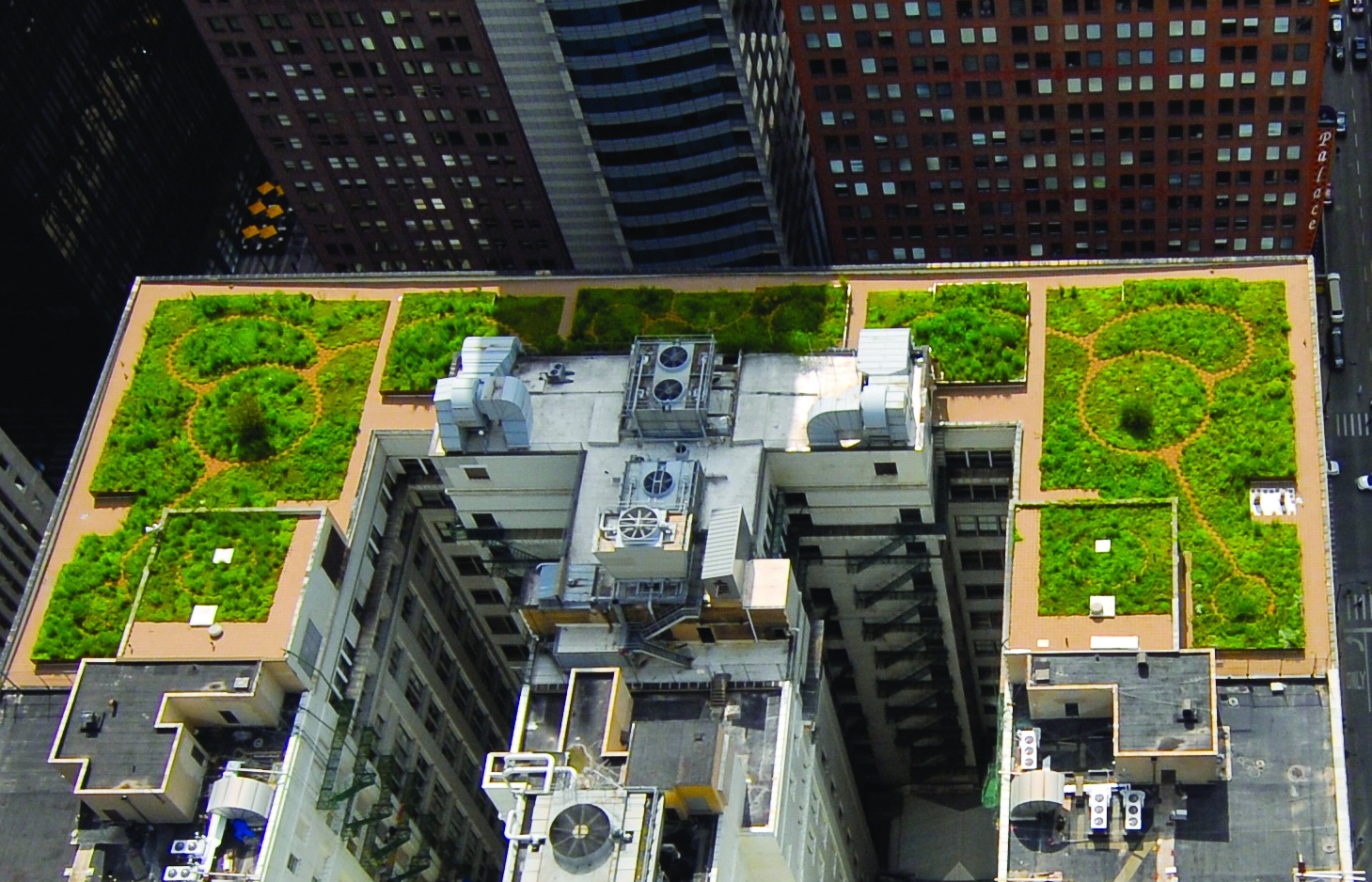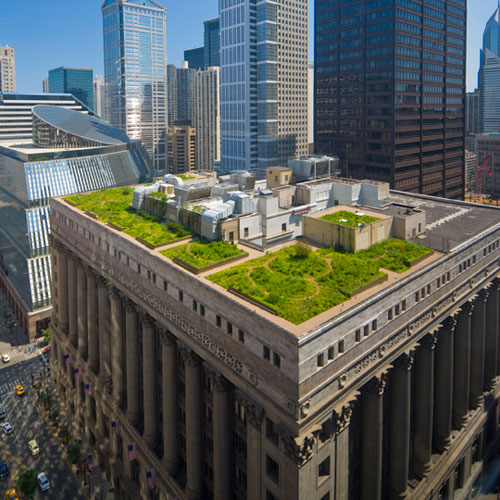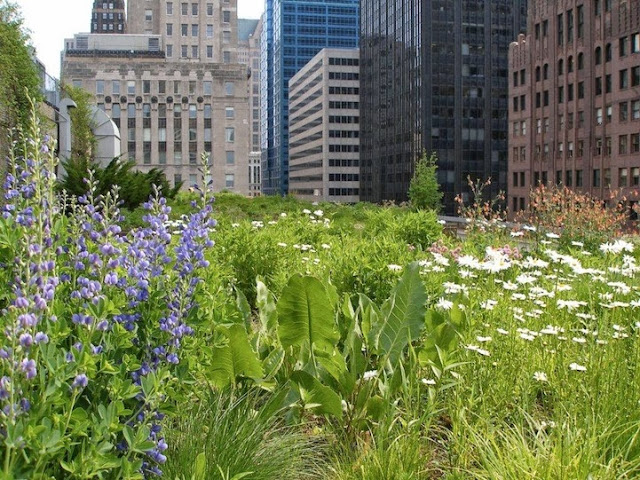Green Roof, Chicago City Hall (2001)*
Artist/Designer: William McDonough
Project Location: Illinois, United States

( Source | Accessed : January 13, 2014 )


Style/Period(s):
Contemporary, Neoclassical, Classical Revival
Primary Material(s):
Light, Stone, Concrete
Function(s):
Garden, Government
Related Website(s):
Significant Date(s):
21st Century, 2001, 1905
Additional Information:
Project Description:
Chicago’s most famous rooftop garden sits atop City Hall, an 11-story office building in the Loop. City Hall and the adjacent Cook County building appear to most people as one building spanning a city block bounded by LaSalle, Randolph, Clark and Washington streets. First planted in 2001, the City Hall rooftop garden was conceived as a demonstration project - part of the City's Urban Heat Island Initiative - to test the benefits of green roofs and how they affect temperature and air quality. The garden consists of 20,000 plants of more than 150 species, including shrubs, vines and two trees. The plants were selected for their ability to thrive in the conditions on the roof, which is exposed to the sun and can be windy and arid. Most are prairie plants native to the Chicago region.
Like all green roofs, the City Hall rooftop garden improves air quality, conserves energy, reduces stormwater runoff and helps lessen the urban heat island effect. The garden's plants reflect heat, provide shade and help cool the surrounding air through evapotranspiration, which occurs when plants secrete or "transpire" water through pores in their leaves. The water draws heat as it evaporates, cooling the air in the process. Plants also filter the air, which improves air quality by using excess carbon dioxide to produce oxygen.
The rooftop garden mitigates the urban heat island effect by replacing what was a ballasted, black tar roof with green plants. The garden absorbs less heat from the sun than the tar roof, keeping City Hall cooler in summer and requiring less energy for air conditioning. The garden also absorbs and uses rainwater. It can retain 75% of a 1-inch rainfall before there is stormwater runoff into the sewers.
Publications/Texts in Print:
Cantor, Steven L. Green Roofs in Sustainable Landscape Design. New York: W.W. Norton & Co., 2008.
Snodgrass, Edmund C., Linda LcIntyre. The Green Roof Manual: A Professional Guide to Design, Installation, and Maintenance. Portland: Timber Press, 2010.
Wethman, Christian, Michael Van Valkenburgh Associates. Green Roof: A Case Study. New York: Princeton Architectural Press, 2007.
Building Address:
121 N LaSalle Dr, Chicago, IL 60602
Significant Dates:
1905- The original building was constructed.
2001- The rooftop garden was completed.
2002- Won the American Society of Landscape Architects Professional Merit Award.
Supporting Staff/Designers:
Original building architects: Holabird & Roche
Roofscapes Contractor: Church Landscape
Landscape Architect: Conservation Design Forum
Architect: McDonough + Partners
Project Engineer: Roy F. Weston, Inc.
General Contractor: Bennett and Brosseau Roofing
Waterproofing: Sarnafil
Greenroof System: Roofscapes, Inc. (now Roofmeadow)
Greenroof Consultant: Joerg Breuning, Green Roof Service LLC
Tags:
Green roof project, roof garden, garden, landscape, Chicago, City Hall, sustainable design, green design, ecology, nature, William McDonough & Partners
Viewers should treat all images as copyrighted and refer to each image's links for copyright information.